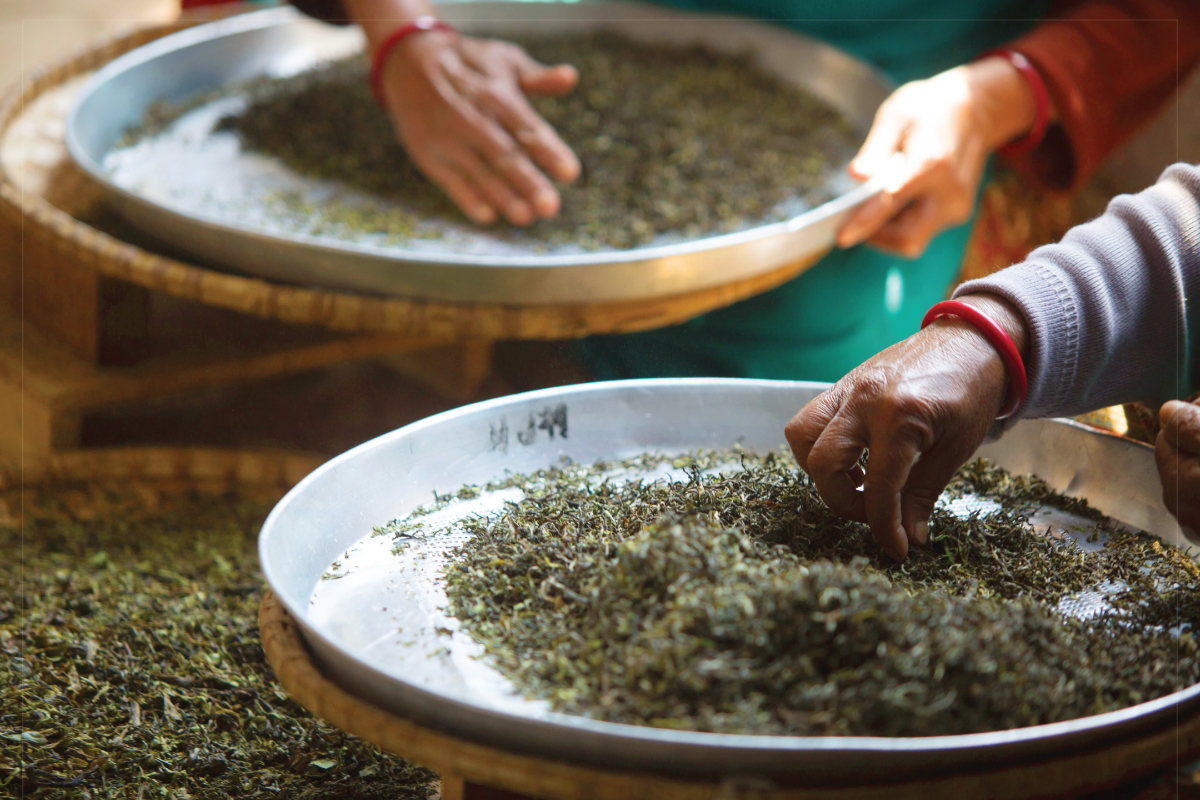I received a FedEx package this September from the folks at Teabox. In it were five of their high-end South Asian oolongs.
I had just returned from a two-week tea tour of Taiwan to visit with tea masters who turn out the illustrious, highly-fermented, sun-dried Bai Hao oolong, the lightly-fermented, intensely flowery Bao Jong, and the high mountain (gao shan) rolled oolongs grown at over 1,000 M. My assignment was to compare and contrast the established oolongs with the newly-minted Himalayan oolongs.
I’m a ferocious fan of Formosa and a dogged devotee of Darjeeling. I was about to sample two quite different lines of tea, from different earth, with different histories and dissimilar genetic make-up. I knew this wouldn’t be easy. Comparing Himalayan semi-fermented oolong teas with their cousins from East Asia was like – if I may – “comparing apples and oranges.”
The Taiwan oolong tea we sip today was born in Fujian, China in the 17th and 18th Centuries, during the Ming and Qing Dynasties. In the mid-18th Century, Fujian immigrants, including pioneering tea-makers, crossed the shallow Taiwan Strait to settle on the nearby island of Formosa; they brought their tea bushes and tea-making skills with them and spent the next 300 years bringing them to a point of near-perfection.

When demand for these limited production, hand-made Taiwan oolongs outstripped supply, Taiwan began exporting Formosa tea cultivars and tea-making experts to Thailand Doi Mae Salong, Chiangrai) and Vietnam. These off-shore enterprises now export Formosa oolongs to Taiwan, Japan and the West.
Indian tea-makers entered the fray in the mid-18th Century and developed orthodox methods for making black tea to the point of perfection, with Darjeeling tea at the apex both literally and figuratively.
Not to be left on its back foot with the sudden growth of popularity of green and oolong teas in the 1990’s Indian tea-makers began to offer semi-fermented teas, as well. Early exemplars were not up to the mark, but over the last 25 years tea-makers there have begun to turn out some very refined teas, though their take is different from the oolongs to which I have grown accustomed.
I set up the cupping, as I always do, by laying out the dry leaf on a clean white surface in front of the regulation tea brewers and tasting cups. The Himalayan oolongs were plucked to a high standard, very tippy, artfully twisted into long, slender spider legs as one would expect from the experienced tea makers of Darjeeling. They were highly fermented (80%) as oolongs go, and were multi-colored, warm-toned, mottled with green, copper and gold. The infusions were reddish or reddish-green; one was – unusually – purplish. Liquors were bright amber, some orangey. The predominant aroma across these samples was of the so-called “Muscat grape,” typical of the very fine fully-fermented Darjeelings.

I steeped one of the Darjeeling oolongs in a “regulation” tea-taster‘s brew cup, in a roomy Taiwan glass tea pot and in a ceramic “auto tea brewer” designed for oolongs by a Taiwan tea specialist in the US to see how these oolongs might behave under different brewing scenarios. The tea reminded me more or less of Bai Hao, the highly fermented signature oolong tea of Taiwan. It was nothing like the high-grown (gao shan) oolongs of Taiwan, such as Dong Ding, Ali Shan and Li Shan, all of which are greener, spicier and more complex, with a lingering aftertaste. All of which are ball-rolled. The Himalayans did not maintain their complexity during subsequent steeping, as Taiwan oolongs typically do.
It is no wonder there are dramatic differences: Tea scientists in China and Taiwan have developed 100’s of oolong tea cultivars, genetically selected for oolong characteristics; they have perfected techniques which produce an array of oolong leaf styles; several methods for controlling oxidation and “killing green;” various firing methods; and ingenious ways of enhancing and limiting tea leaf oxidation. These advances have added many layers of complexity to the Taiwan oolong cup.
There has been some experimentation with oolong-making techniques in the Himalayas. I know of two Indian tea-makers who acquired Chinese tea-making machinery – rolling machines – but the new Himalayan oolongs don’t strike one as typical; they tend to hit many of the “Darjeeling black tea buttons” I believe India and Nepal oolongs are turned out using the orthodox black tea template with tweaks at the withering stage and at fermentation. In other words, these new oolong tea makers have not retooled the factory. They may not employ the sun-withering or sun-drying characteristic of many Taiwan and China oolongs.
To summarize my experience and results: Himalayan oolongs are a very different animal from their East Asian cousins. They arise from a different tradition. They utilize genetically dissimilar plant materials and follow different manufacturing procedures. Yes, both are oolong or semi-fermented teas, but the putative challenger (India/Nepal) is no match for the title defender (Taiwan). The saving grace is this: The Himalayan oolongs I cupped were beautifully turned out and lovely in the cup. They represent a new sub-set of premium-quality, semi-fermented teas of the Himalaya, in a class by themselves. The lower rate of fermentation seems to promote the luscious, syrupy muscatel that elevates the Darjeeling tea to champagne status. I dub them the “Darjeelongs.”
Featured banner by Gautam Virprashad

